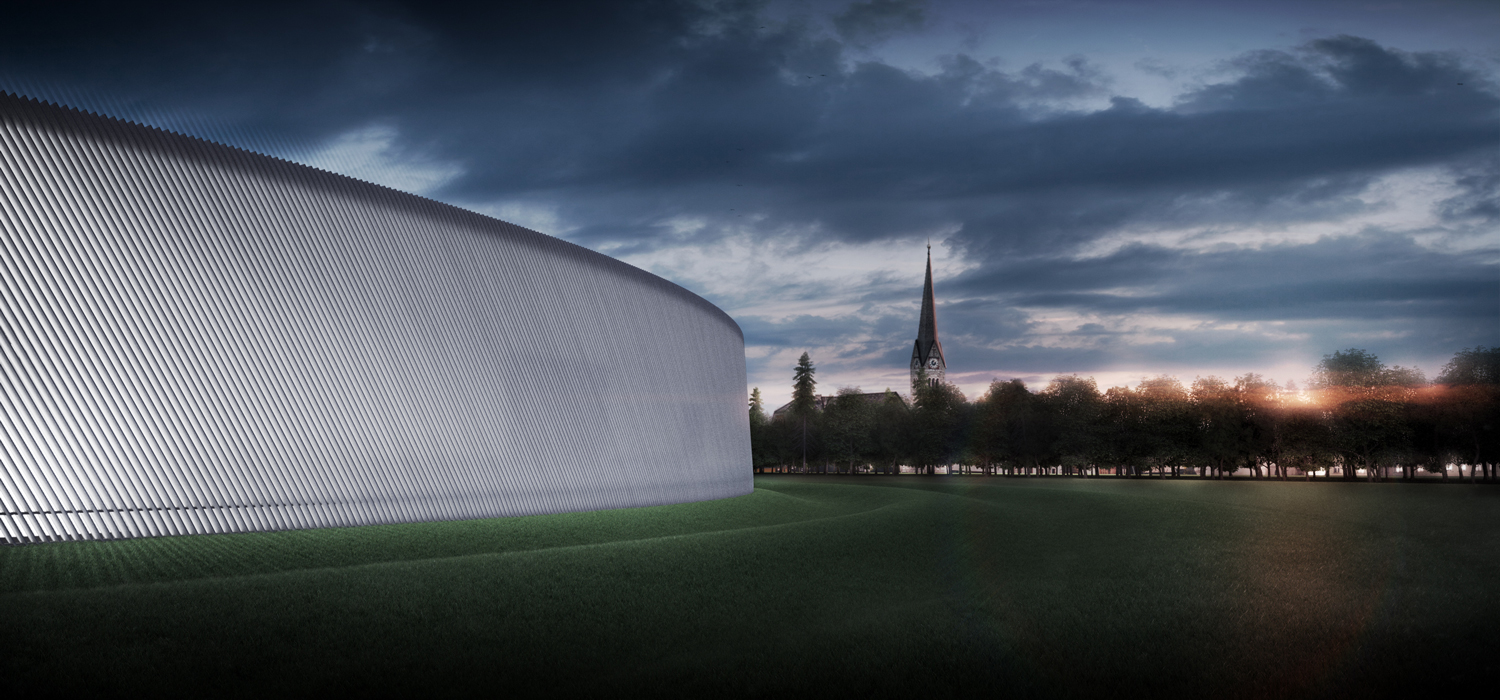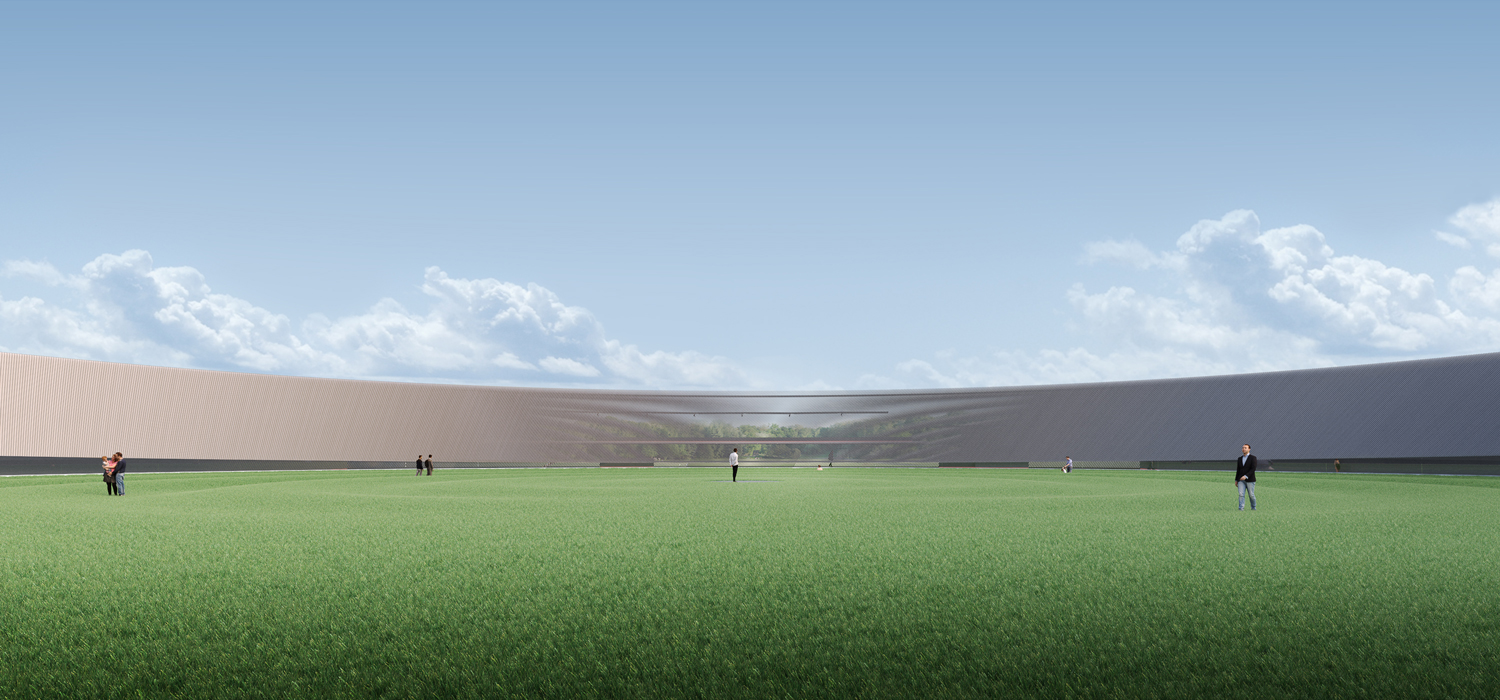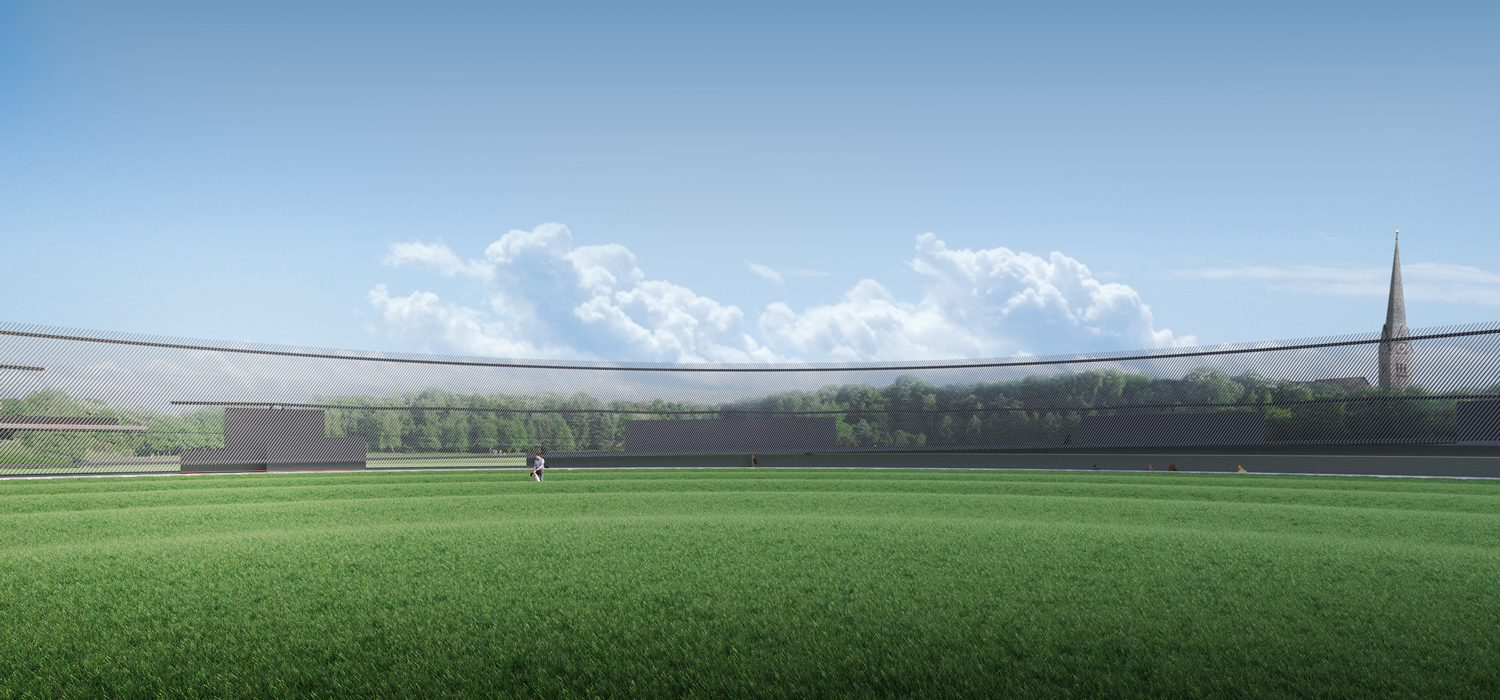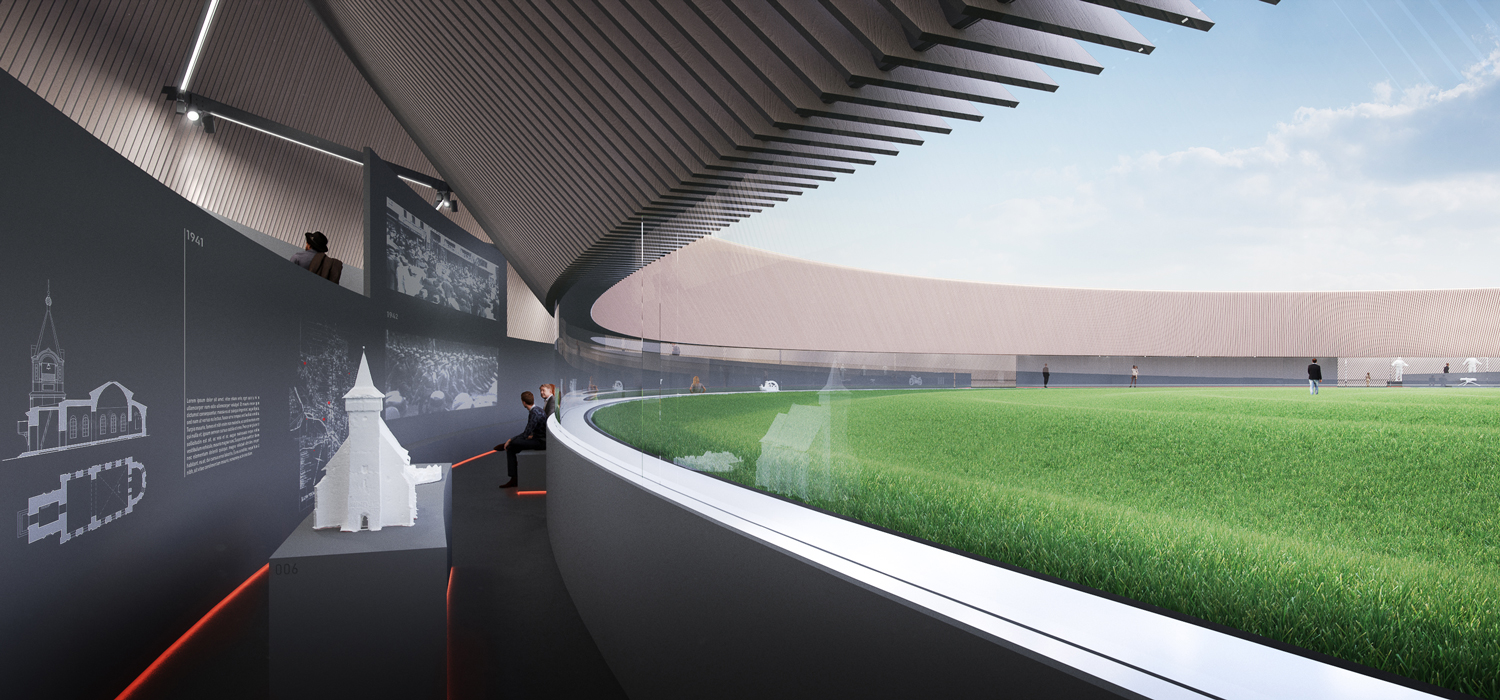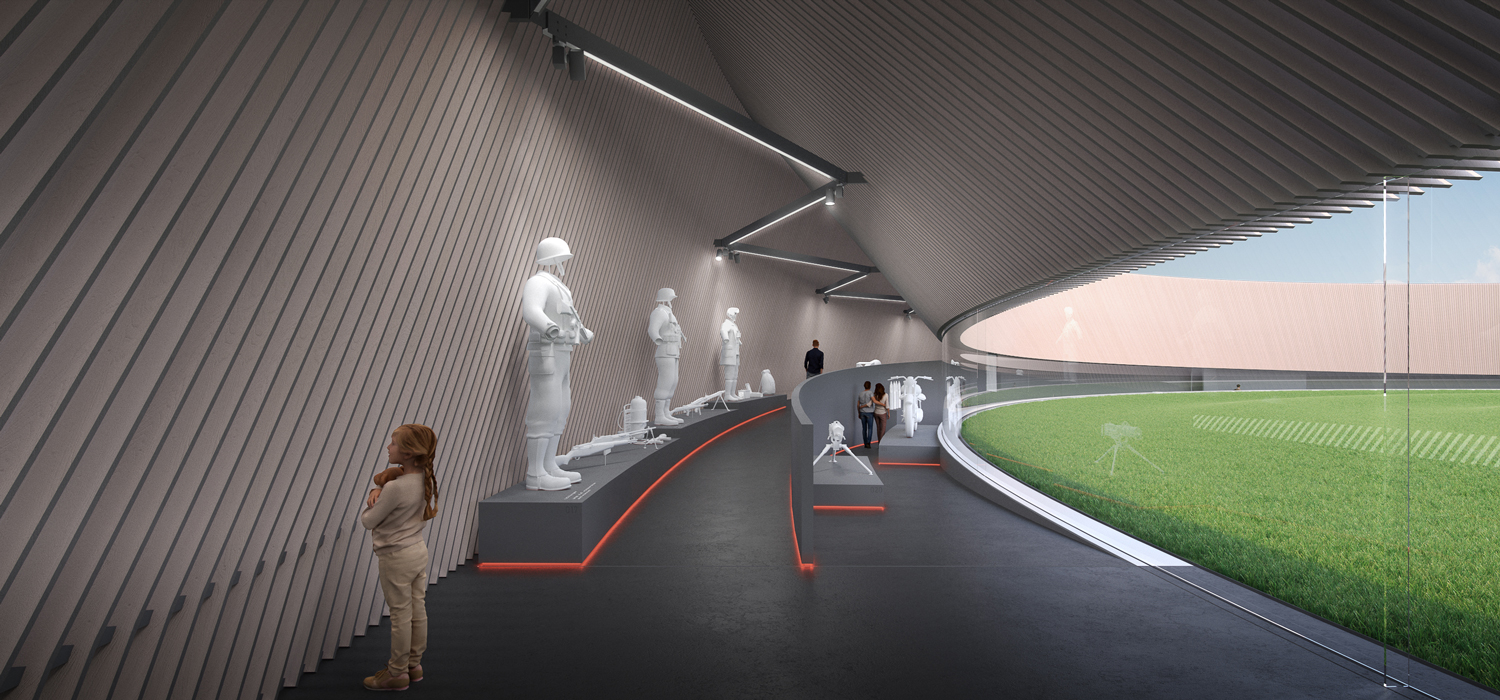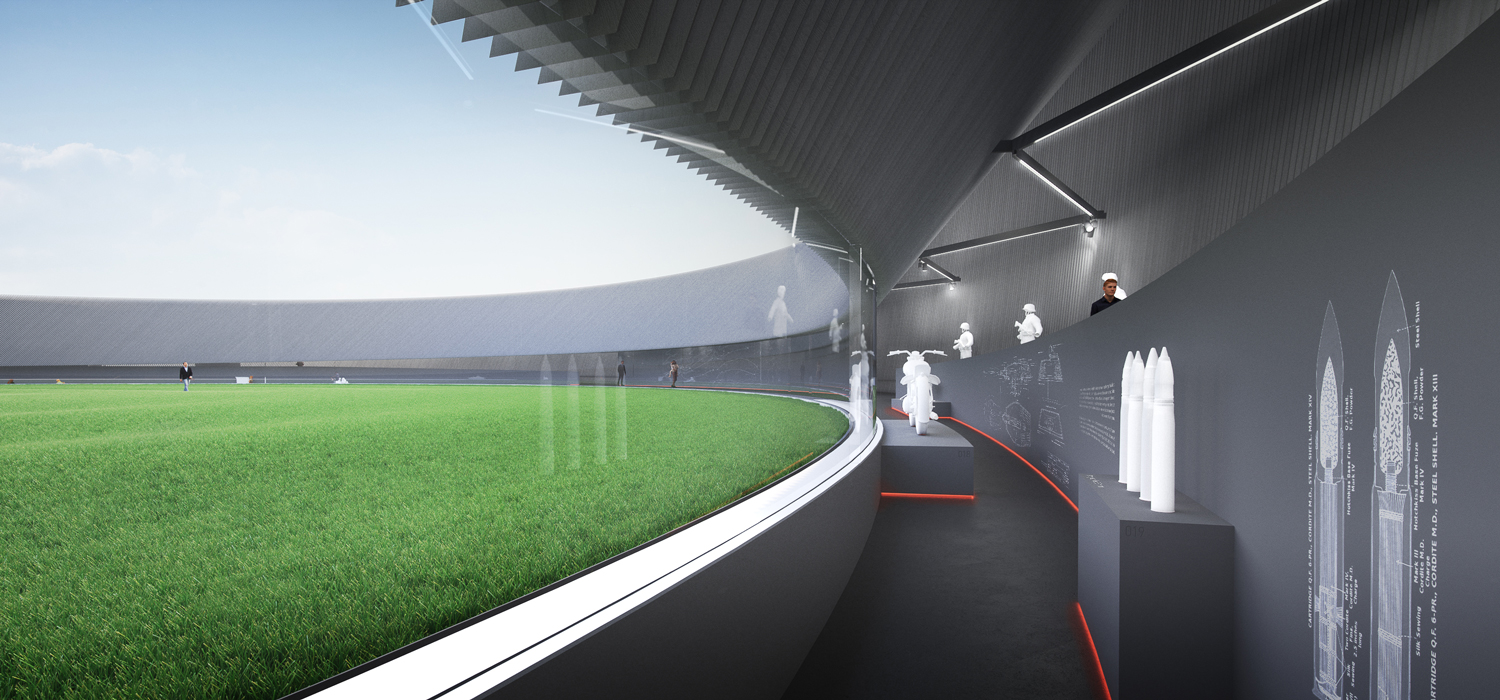2453-PVU-UND-2018
Client: Unknown
Status: Academic
Location: Undefined
Climate: Undefined
Materials: Metal, Glass
Environment: Undefined
Visualizer: Studio
Scale: 1.492 ㎡ Medium
Types: Cultural, Museum
The plot for the museum is located on a small grassy plain not far from the village center. This location, the village, its residents and events that took place here are all part of the history narrated by this museum and memorial. Plot dimensions are 350m by 350m and, inside of it, buildings footprint takes up a 100m diameter. Separating the building footprint and the inner garden sets the base area of the building at 1492 square meters.
Program and functions
Main entrance/exit, gift shop and administrative offices are all located at the south side of the museum. Narrow and circular shape guides the visitor along the first part – historical timeline. Divided into two levels it leads the guest down two separate narratives told by different sides of the conflict. Center exhibit recaps the storytelling of the historical timeline, displaying the wall of names and the map of the region after the war. Other exhibits contain pieces that are not placed in any specific timeline but they help the visitor to understand the details of these events. By raising the floor levels a space is formed for service functions such as technical and HVAC rooms, below the route A of historical timeline, and toilets on the opposite side.
Shape and waves
Standing in the middle of the garden visitor sees waves frozen in motion that seem to originate from the place that he/she is occupying. These wave formations symbolize the potential impact of every human being on the present or future that lies ahead. Building doesn’t stop the wave formation, it’s a part of it. But unlike other waves, it represents an abrupt change in wave harmony – depicting the effect of war and misfortune that occurs suddenly in the timeline of history with disastrous impact on the humanity. Such anomalies in time are caused by our actions where every decision that we make impacts the course of history. Every one of us has an opportunity to change the future for the better – or for the worse.
«…what we do in life, echoes in eternity.»
Maximus Decimus Meridius – ‘Gladiator’
Façade
The facade is formed by intersecting planes with the base shape of the museum, planes are arranged in a circular array with one point of origin – middle of the garden. Intersection the two geometries creates 2052 separate facade ribs with 15cm space between them. Tilting the ribs 30 degrees in the clockwise direction, again pivoted in the center, emphasizes the dynamics and the circular motion of the facade.
Transparency
From outside, the geometry of the ribs allows a limited and a narrow view into the museum. By entering and following the historical timeline path the visitor sees and hears the story of this area and historical events that took place. The prime moment of understanding the story comes at the center of the garden where suddenly the shape of the building disappears and everything surrounding is visible. Now, the visitor understands what and how much these events have changed the landscape around him/her. This unique transparency symbolizes the learning path of human beings – quick view of a subject gives a limited amount of informations, but deeper exploration is rewarded with revelation. This effect comes from the way the ribs are created, planes originating from the center, and from there they are visible as diagonal lines showing only their thinnest side.
Materialisation
The ribs are formed with two timber sheets joined and reinforced in the middle with a steel sheet. Clockwise face, the one following the visitor along its main path, is colorful wood texture and the counterclockwise face, the opposite one representing the past, is a desaturated wood texture. Two-faced facade emphasizes directions and guides the visitor through the building. It also has a strong impact on one’s examination of the exhibits – with just a couple of steps forward/backward or just a turn of a head, one can ‘change’ the complete scenery surrounding the exhibit.
Connections
Primarily, the museum is accessed from the local road where the parking would be located, pedestrian path then leads visitors to the entrance. Secondary connection is the one with the village – discreet and small path through the forest. The area around and inside is planned to be accessible and open to visitors when the museum is closed. The entrance is oriented towards the south, with the village on west and the local road on the east side of the museum.
